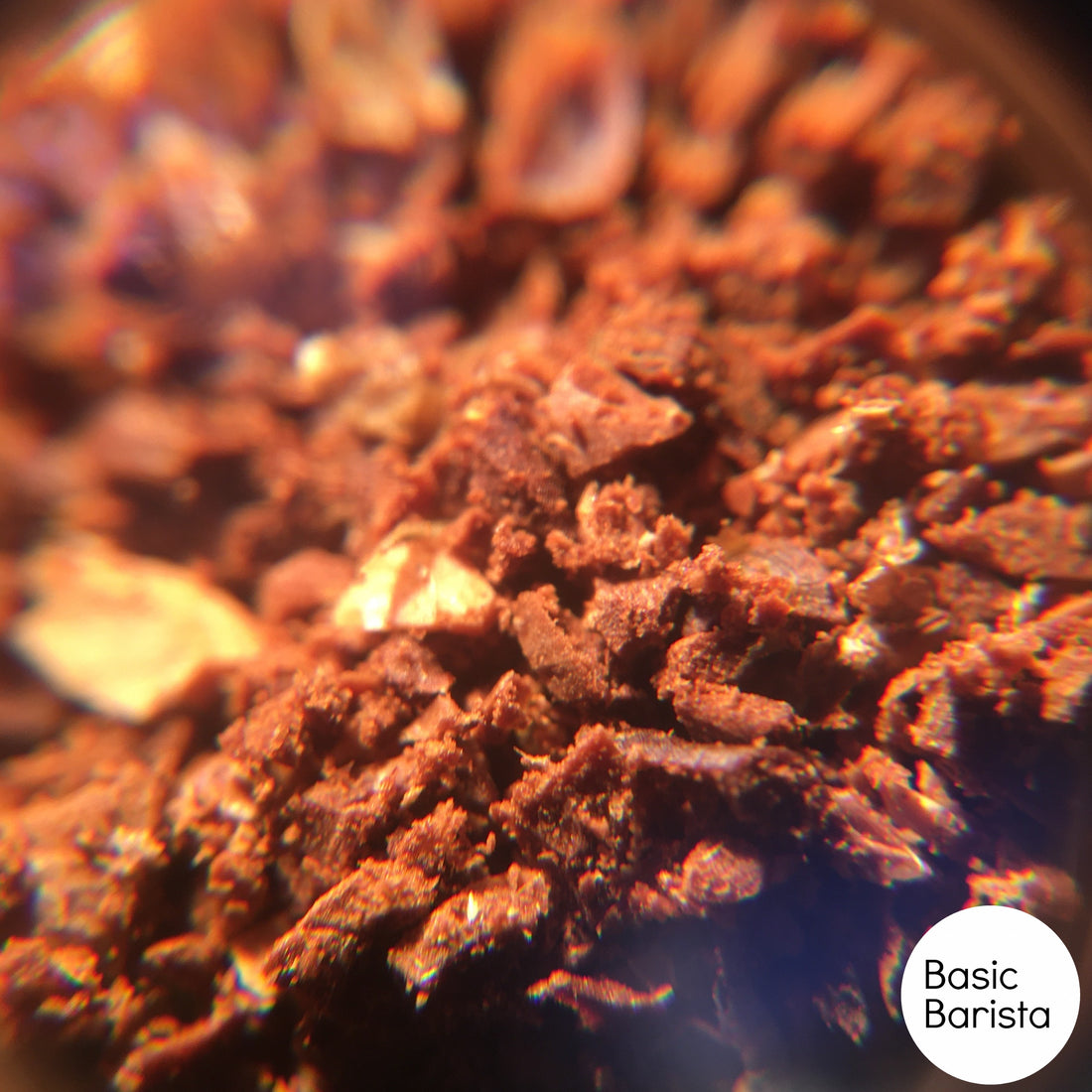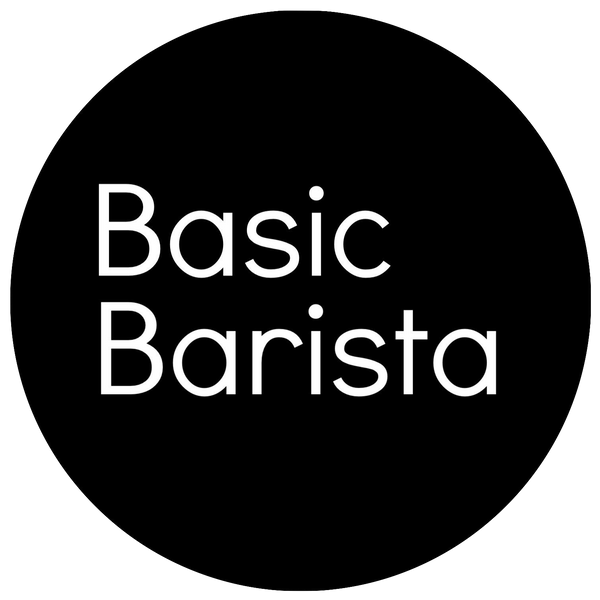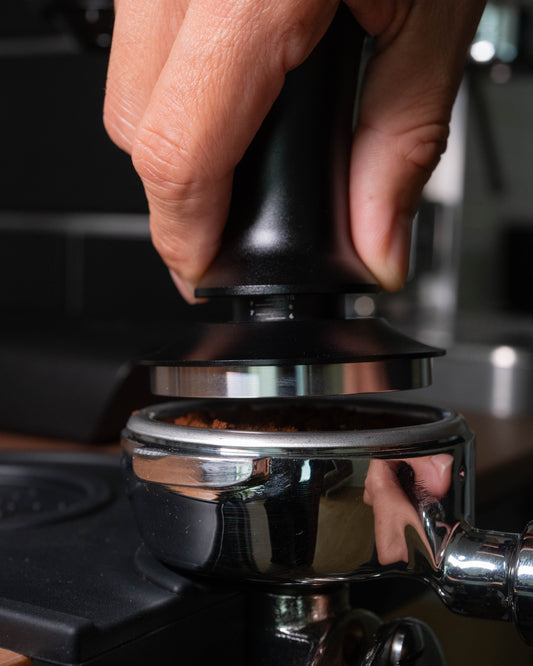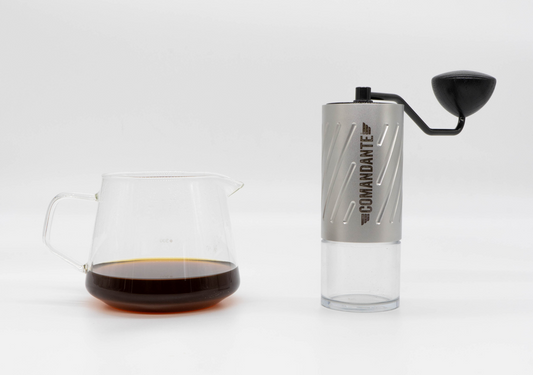
FINE TO COARSE
Estimated read time: 4 minute
Share this article
Regardless of what coffee recipe you are following, a crucially important part that needs to be discussed is your grind size. Basic for some but new territory for others, in this topic we will break that barrier and cover enough ground for you to understand the basics as well as some more technicalities.

Grind size refers to how coarse or fine your coffee is ground. There are a multitude of methods to grind coffee and there are ways to measure where about your grind size sits on this spectrum.
When starting off one of the best ways to comprehend what this spectrum looks like is to grind some coffee at different intervals and place the grounds next to each other, aim for a more extreme difference between sample sizes to truely demonstrate what ever tool you are using is capable of.
Sample A is an example of finely ground coffee.
Sample B is an example of medium ground coffee.
Sample C is an example of coarsely ground coffee.

This is the first thing you need to understand, after identifying that you can grind from fine to coarse you can start looking at coffee grind size in more depth, to do this we need to cover some basics and make some generalisations. Generally a fine coffee is used for espresso, a medium ground coffee is used for a pour over and a coarsely ground coffee is used for a cold brew extraction.
How do you measure how coarse or fine your coffee is?
The first technique is by far the most handy and accessible method, Using your senses is by no means scientifically measurable but paired with some experimental brewing and you will be able to dial in the correct grind size. Things to look for when you don’t have any equipment is clumping, compact-ability, texture and smell.
- Clumping predominantly occurs with finer ground coffee, when your particles sizes are 500 microns or less you might see an uneven collection of particles that look like little boulders made up of small sticky particles.
- Compact-ability refers to how sticky and easily you can compress your ground coffee into a shape and have it maintain that shape, as you can imagine if you have some dry sand and you try to compact it by hand to make a shape you might struggle, if you were to wet the sand and create more of a sticky binding agent this would resemble what compacting a finer ground coffee is like.
- Texture, run your finger through your coffee grinds does it feel like a fine sand paper or is it a gritty crumbly texture?
- Smell, We found that when comparing the smell of coarsely ground dry coffee to finely ground dry coffee the smell was noticeably different, the finer coffee had a slightly stronger intensity with a heightened complexity. This makes sense as there is more surface area with finer ground coffee hence more aromatics are released. Relying on your sense of smell to define how coarse/fine your coffee grinds are is incredibly challenging if not impossible.
So in summary a combination of all of these indicators will help you identify how coarse/fine your coffee is.
After you have experimented with the feel and texture its important to brew your coffee. Regardless of how you decide to brew your coffee, espresso or french press etc you should absolutely record your measurable variables, time it took and weight of your dose/yield/water used.
After making the first coffee, taste it as well. What did you like about it? What didn’t you like about it? Will you try a coarser or finer grind size for your next brew?
Your later experiments should try to be an expansion of your first coffee. When doing these experiments trying to replicate what you have done in previous experiments but changing only one selected variable such as the grind size of your coffee, this will help you to identify the implications that one variable is having on your brewing process, the interactions it has with your other variables when brewing and your end result. (How it tastes.)
This is a lot to remember so taking notes on these variables and the results you found will help you to come back and start where you left off.

Grind size and its distribution.
After we understand the basics of different sized coffee grinds we can start to explore different brewing techniques as well as having a better understanding of what the best grinder is for the application we want to use it for.
To summarise and make a generalisation cheaper grinders will have a wider particle size distribution then more expensive grinders.
This does not take into account factors such as portability and materials used or different functions that were considered to determine the price of said grinder.
What I mean by this is that an inexpensive blade grinder does not have the capability to accurately grind to one uniform size (the range or difference of your coffee grounds will be further apart). While some commercial grinders can keep their particle grind size to a much more uniformly accurate size. There are some tools available to test out the range or consistency of size that you are grinding coffee at, for instance ‘Kruve Sifter’ works by sifting your ground coffee through a system of sifts with different sized holes.
Keep in mind this process still won’t take into account the surface area of your particles, as the action of sifting through a sift only will reflect the 2 dimensional size of a particle.
To tie this in to your decision making process, we now have an understanding of different grind sizes and how to identify what works well for your chosen brew method, We also understand that coffee grinders are different with their capabilities of grinding at a uniform particle size.
If you are finding this all to complicated, that is ok, as a rule of thumb when you are starting out try to get the best value grinder that has some form of grind size adjustment, don’t worry about particle sizes, microns or any other technicalities.
If you are looking for a grinder that is capable of grinding really unanimous particle sizes then usually but not always, you start to have less range. This is ok, if you are a daily espresso drinker then having a grinder specifically just for espresso is a good idea.
As a general rule of thumb grinders that have been described as a ‘great’ Espresso grinder or Filter grinder will be indicative of what they are best used for.
We hope that you have learnt something from this and we want to hear your experiments!
How did they go?
What are you currently using to grind your brew?
Where you surprised with any outcomes?
Did you find this useful?
Feel free to share with us on instagram here.
Youtube Channel here.
or
Have a more personal question? send us an email at:
basicxbarista@gmail.com



